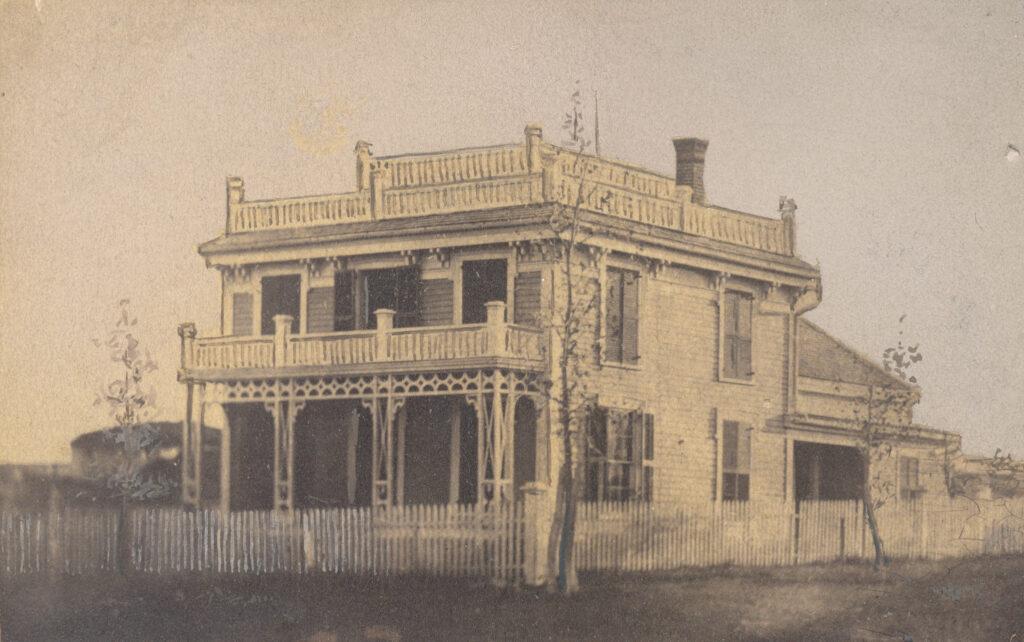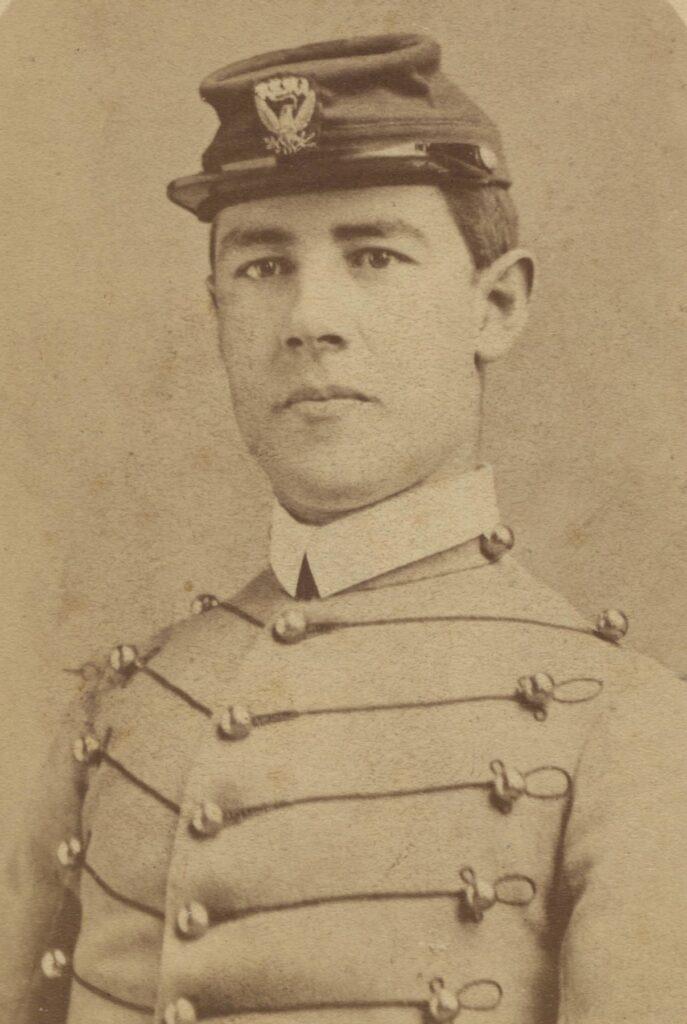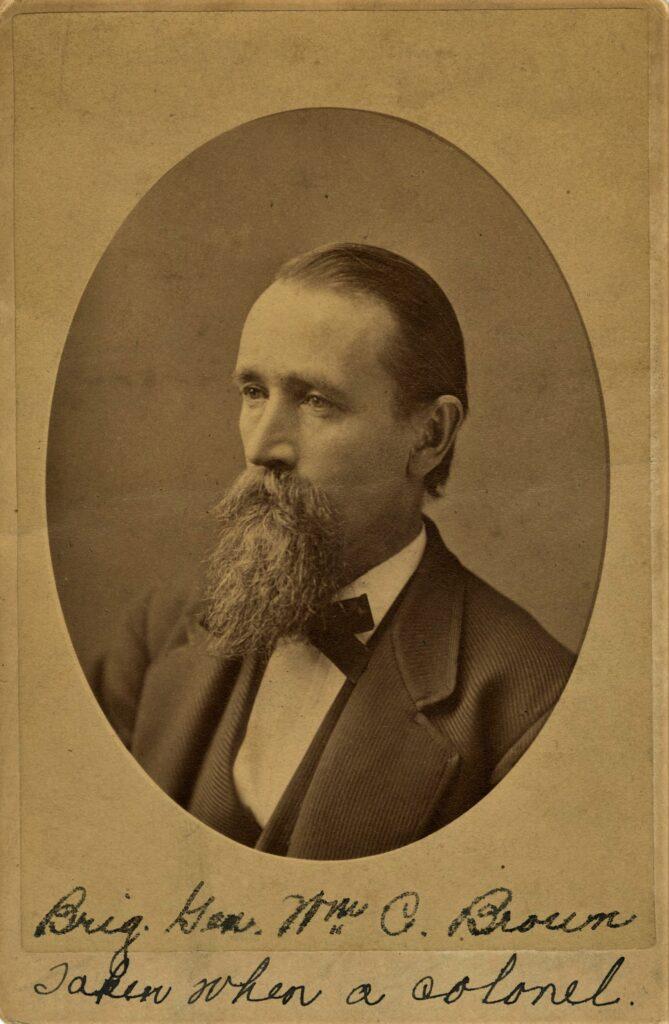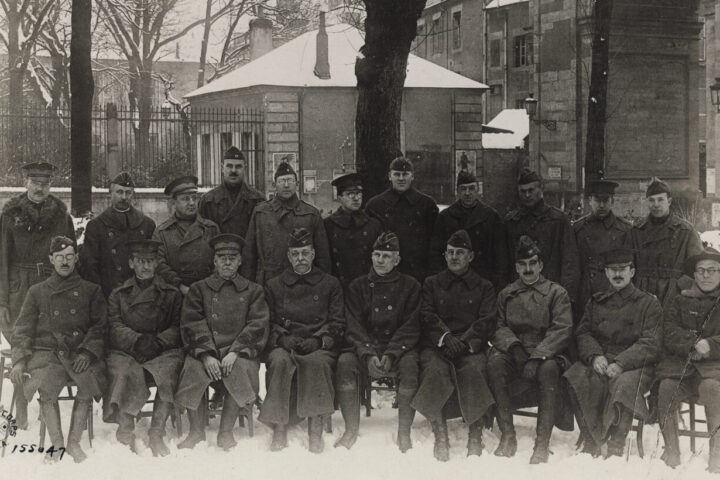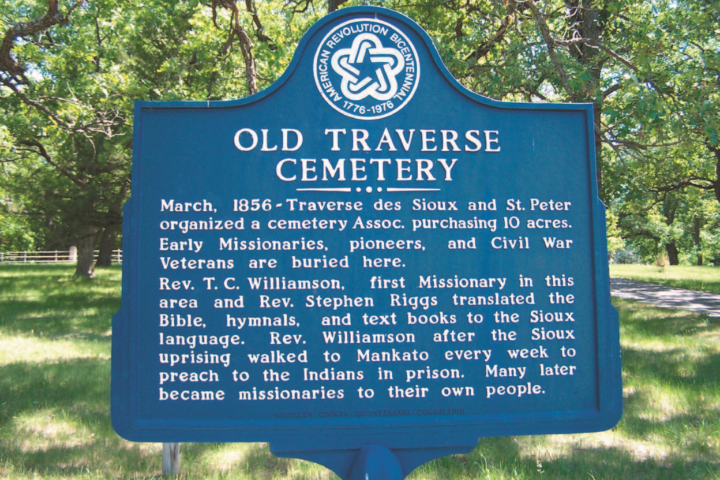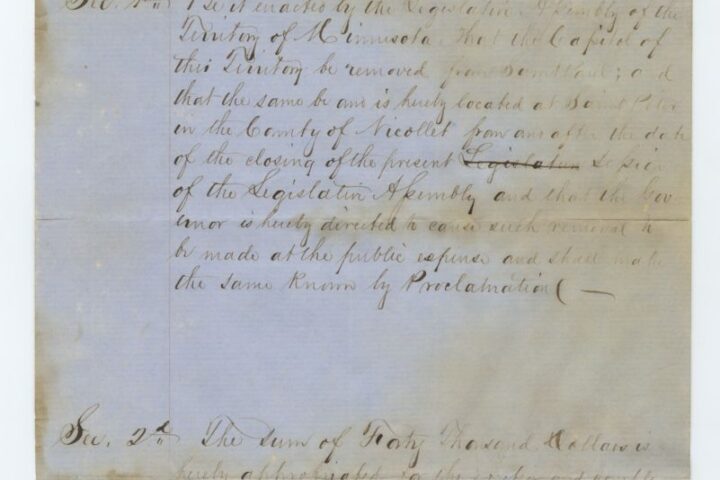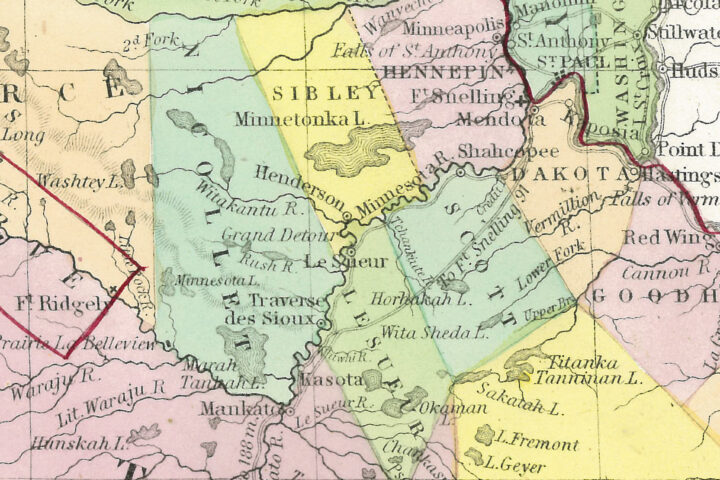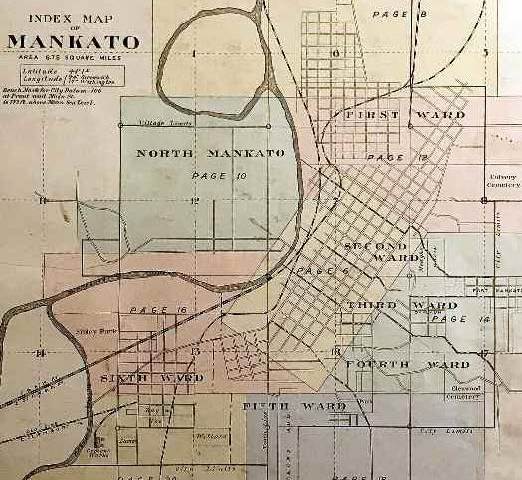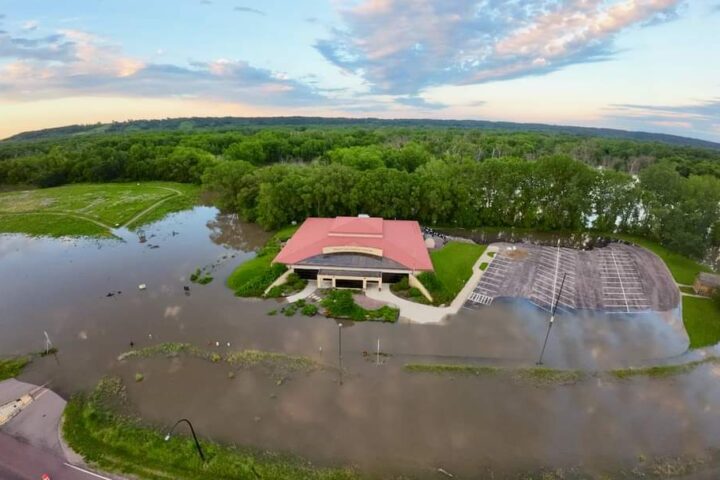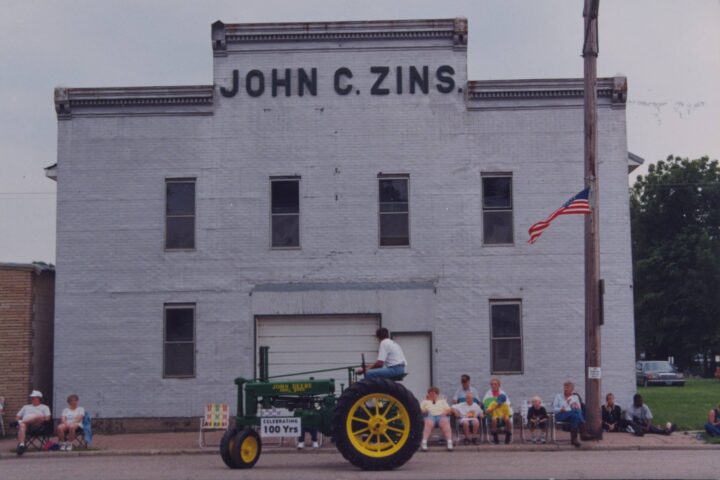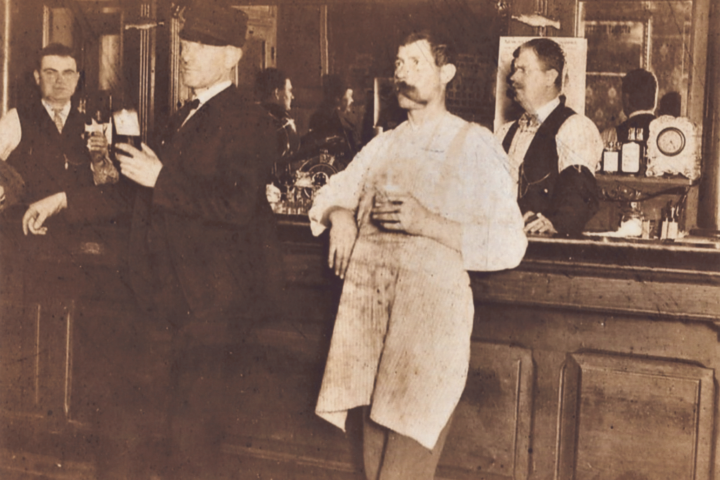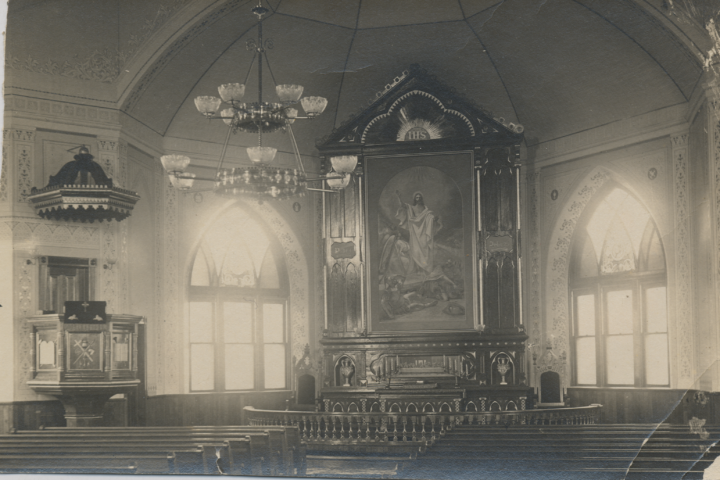Garretson Addison Brown and his wife, Susan, moved from Ohio to the new community of Traverse des Sioux in Nicollet County in 1853.
At various times, Brown operated a store, was in the livestock business, served as a postmaster, and was Nicollet County Judge of Probate from 1859 to 1868.
On December 19, 1854, a son, William Carey Brown, was born. He was one of the first children to be born to settlers in Nicollet County. In his long and eventful life, he became a general in the United States Army and received numerous medals and other honors. An abstract of his military record contains 52 numbered pages.
William was educated in schools in Traverse des Sioux and St. Peter. Still a child during the Dakota Conflict in 1862, he and his family would have seen the two communities fill with thousands of refugees and soldiers. Perhaps memories of those soldiers inspired William to join the United States Army. He attended West Point from July 1, 1873, until June 14, 1877, graduating 41st in his class.
As a new second lieutenant, Brown was assigned to Company L of the 1st Cavalry Regiment at Fort Walla Walla in Washington Territory. On June 7, 1878, he became a participant in a long campaign against the Bannock and the Sheepeater (part of the Shoshone tribe) Indians under General O. O. Howard.
A report by Howard to his superior stated that Brown was among a small number of men who “deserve special mention for gallantry, energy, and perseverance, resulting in success.”
After exploring unmapped parts of the pacific northwest and helping construct 100 miles of telegraph line, among other duties, Brown was ordered to the Infantry and Cavalry school late in 1881. The school had been founded in Fort Leavenworth, Kansas, by General William Tecumseh Sherman in July of 1881. As a member of the first class of student soldiers, Brown found himself acting as a student and instructor. “Operations of War,” “Cavalry Tactics,” and “International Law” were among the courses that he taught. Brown was rated as number five in his class during his first year and number two in his second year. In June of 1883, he was one of only two graduates recommended for service in all seven departments or specialty areas of the Army.
A wide variety of military duties were assigned to Brown until the Spanish-American War in 1898. From August 1, 1885, to June 30, 1890, Brown served as adjutant of the academy at West Point, New York. In September of 1890, he took command of Troop C of the 1st Cavalry at Fort Assinniboine, Montana. Brown was involved in the winter campaign against Sioux Indians from the end of November until early in February of 1891 in southeastern Montana. During other assignments, he surveyed unexplored areas of today’s Glacier National Park, scouted Apache Indians in Arizona Territory, and served at the World’s Columbian Exposition in Chicago in 1893. He also traveled through England, France, Germany, Austria, and Italy in 1895 to study aluminum in manufacturing military equipment.
Now a Captain and the commander of Troop E of the 1st Cavalry, Brown participated in July of 1898 in the battle of San Juan and the siege and surrender of Santiago de Cuba. Having returned to the United States in August, Brown found himself in command of Fort Washakie in Wyoming by October.
An August 20, 1899 letter to Secretary of War Elihu Root from Theodore Roosevelt gave Captain Brown high praise. It recommended him as a strong candidate in several areas of military duties.
Roosevelt and Brown had both charged up San Juan Hill during the Spanish-American War.
After a few weeks at Fort Snelling, Minnesota, during parts of August and September of 1899, Brown was on his way to the Philippines, arriving in Manila Bay on December 31.
After acquiring the Philippine Islands from Spain after the Spanish-American War, the American Army attempted to deal with guerilla fighters who wanted to end any involvement by the United States in the country’s affairs. In 1901, Brown achieved considerable fame when the Americans encountered an especially dangerous guerilla named Tagunton. General Funston described the event in his memoirs:
“Tagunton, attempting to escape, was shot and killed by Major Brown who got him with a new Colt’s Automatic Pistol at seventy-five yards.”
Vice President Theodore Roosevelt sent a letter to the Secretary of War with the following comments:
“Let me respectfully call your attention to the case of Captain William C. Brown, of the Regular Service, who has just distinguished himself by a particularly neat surprise of the bandit chief Lieutenant Colonel Tomas Tagunton. He not only possesses exceptional gallantry and energy, but he has made a study of his profession in matters of equipment, commissariat, and the like which really fit him to render the utmost possible service to the Army. He served with, and afterwards under me at Santiago. He was an exceptionally fine officer.”
In 1903, Brown was permitted to take a trip around the world. Among the places he visited were the following: Hong Kong, Canton and Shanghai in China, Yokohama and other places in Japan, the Russian port of Dalny near Port Arthur, Irkutsk, Moscow, and St. Petersburg in Russia, Stockholm, Copenhagen, Kiel, Hamburg, Paris, London, Edinburgh, Glasgow, New York, and Washington, D. C. While in New York, Captain Brown had lunch with President Theodore Roosevelt at his Oyster Bay home.
Brown was back in the Philippines in 1906. During this time overseas, he purchased horses for the Army in Australia and New Zealand. On his return to the United States in 1908, he added Singapore, India, and Egypt to his list of places visited.
In 1910 and 1911, Brown visited Panama, Peru, Chile, Argentina, Uruguay, and Brazil. An account of the trip was published in Cook’s Travelers’ Gazette.
With the rank of Colonel, Brown was sent with his cavalry regiment to Mexico in 1916 when the Army was attempting to punish Mexican raiders who had attacked communities in the United States. His expedition traveled over 300 miles south of the border. It came to the relief of another cavalry unit that had been attacked.
During World War One, Brown was sent to France in 1917, where he received the title of “Inspector, Quartermaster Corps” of the American Army. Brown’s efficient and highly praised work earned him the Distinguished Service Medal, one of the Army’s highest awards.
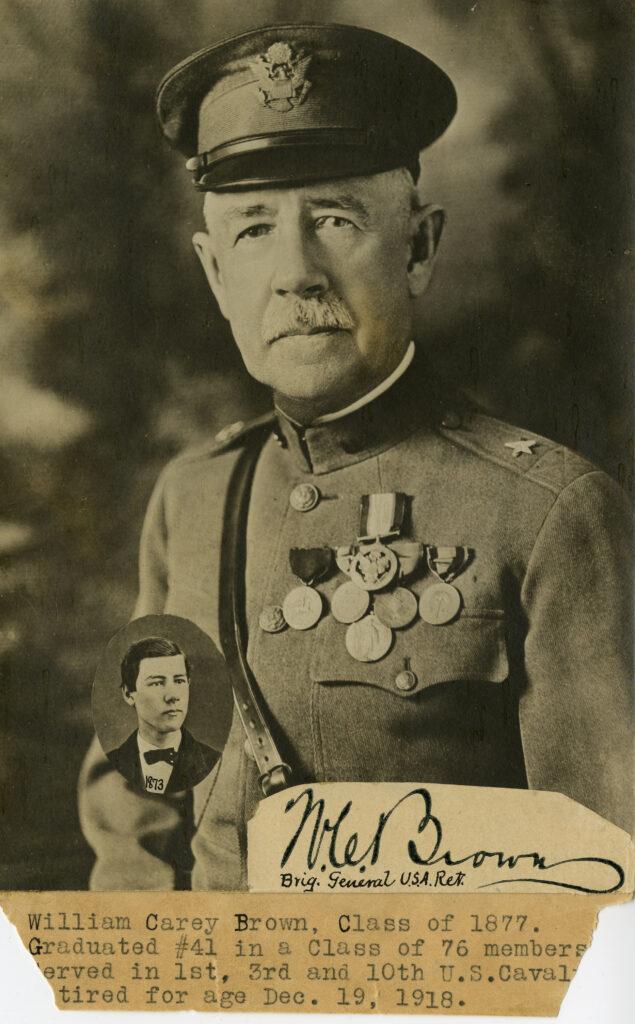
A War Department order in December of 1918 brought his military career to an end at age 64 after 45 years, five months, and 19 days of service. While in retirement, Brown continued to do important work for the Army. He was made a Brigadier General on February 28, 1927, by a special act of Congress.
After leaving the Army, Brown moved to Denver, Colorado, to live with a sister. He was known for his extensive knowledge of military history and was always willing to share that knowledge with others. Brown’s interest in history also extended to the history of Minnesota and Nicollet County. Working with Mankato’s historian Thomas Hughes, Brown helped prepare the book Old Traverse des Sioux. Brown often visited Traverse des Sioux and St. Peter and was a strong supporter of the Nicollet County Historical Society, which has several items that belonged to him, including his medals.
General Brown died May 8, 1939, in Denver. A memorial is in Riverside Cemetery in Denver, but he was buried at the West Point Cemetery in section 4, grave 27.


Bob Sandeen
Bob Sandeen is a St. Peter native who lived there until he finished college at Mankato State in 1970. With a B. S. degree in chemistry, he worked for 30 years as a laboratory technician at the Mayo Clinic in Rochester. In August of 2000, Bob returned to the family home in St. Peter. In June of 2001, he began working in the archives of the Nicollet County Historical Society. Bob has had a strong interest in history since grade school. His immense home library clearly demonstrates that.

